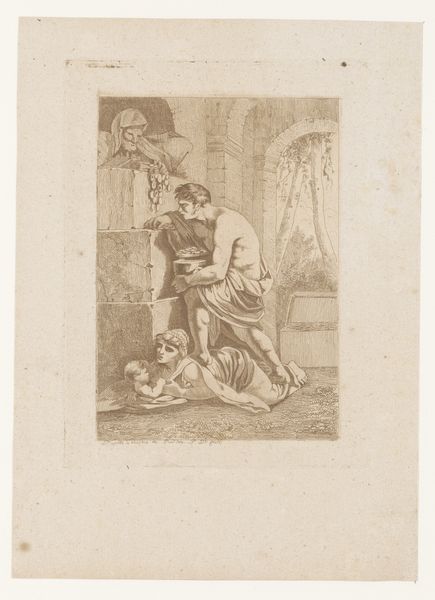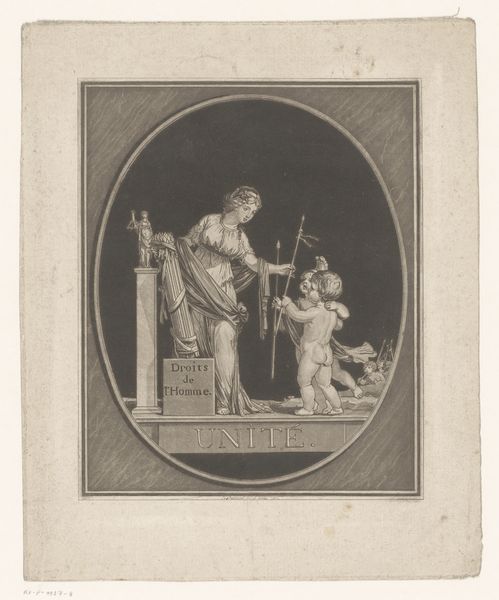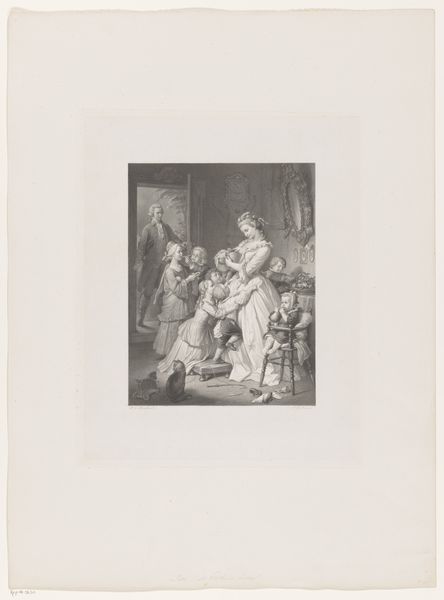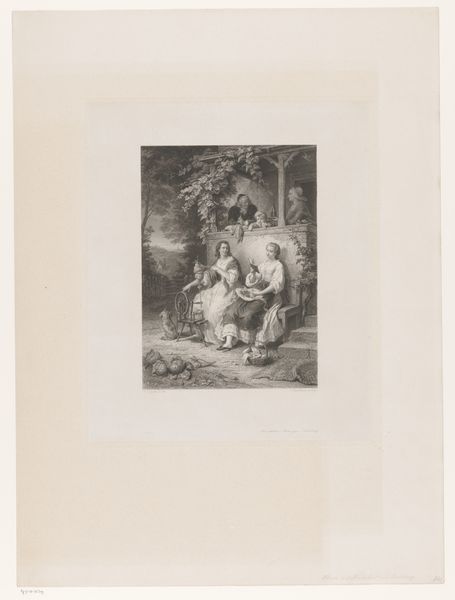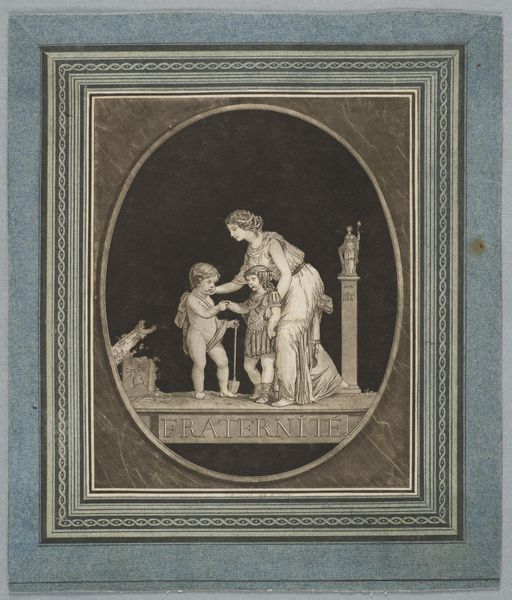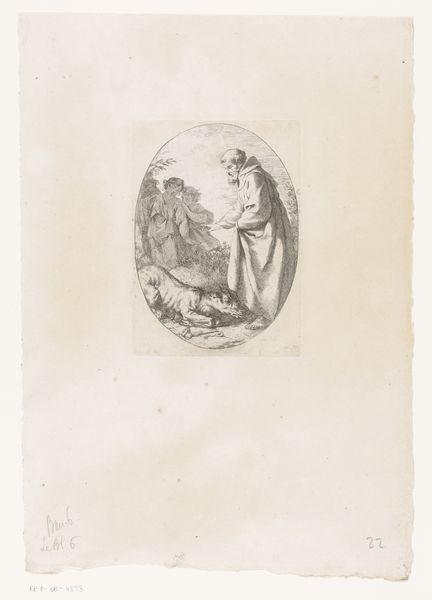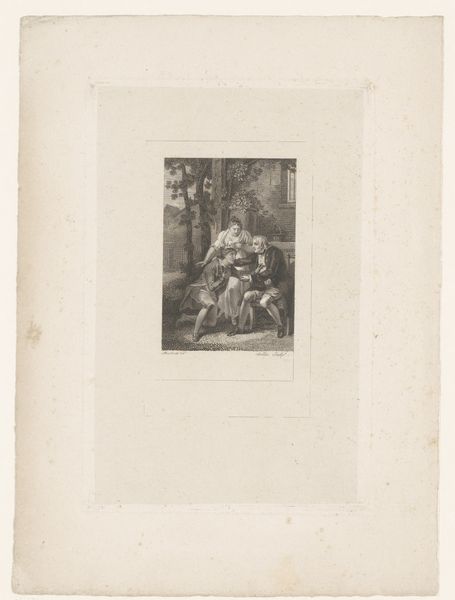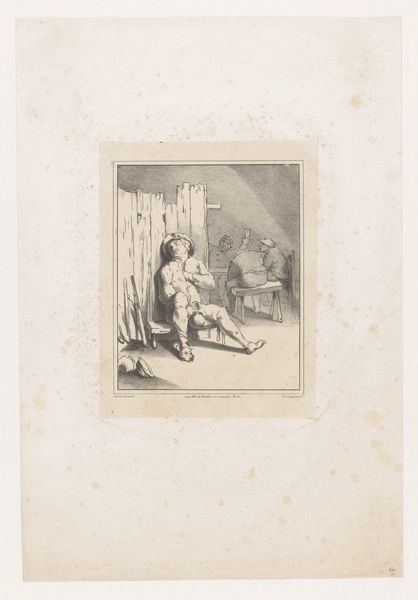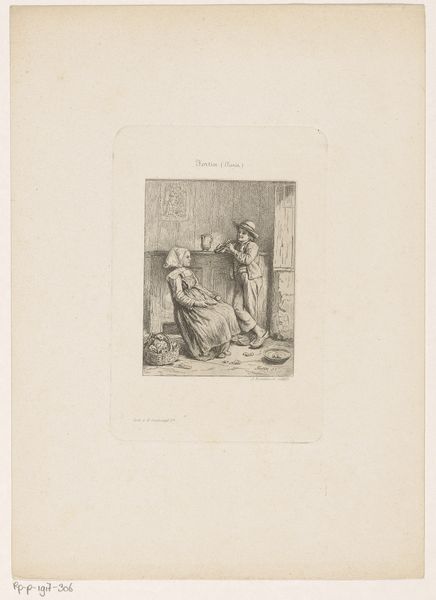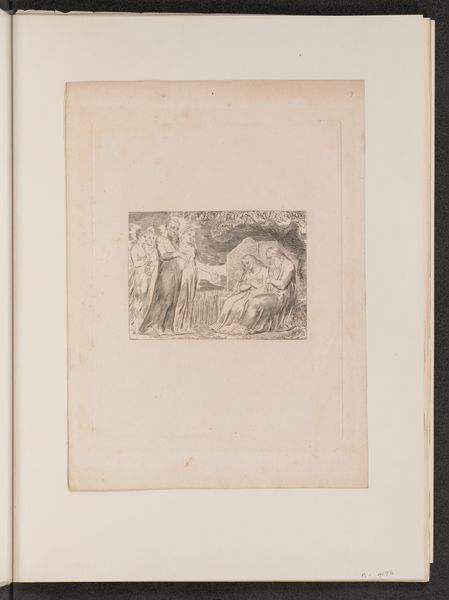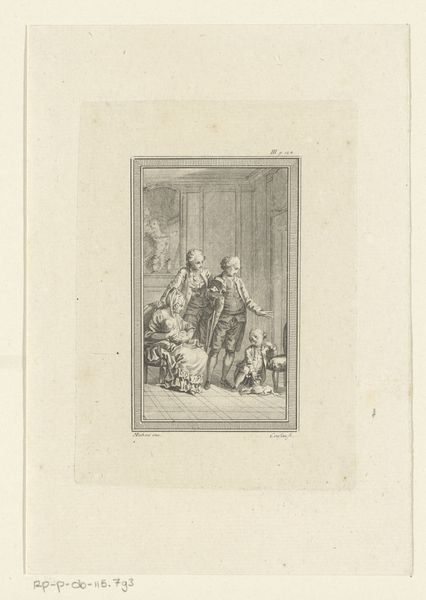
print, engraving
#
neoclacissism
#
allegory
# print
#
old engraving style
#
white palette
#
figuration
#
19th century
#
line
#
history-painting
#
engraving
Dimensions: height 247 mm, width 219 mm
Copyright: Rijks Museum: Open Domain
Louis Philibert Debucourt created this print, Broederschap, sometime between 1755 and 1832, using etching and aquatint. The title, which translates to “Fraternity,” speaks to the revolutionary ideals that swept through France and beyond during Debucourt’s lifetime. Here, we see an allegorical image of unity: a classically-draped woman, perhaps representing Liberty or Reason, guides two young boys to clasp hands in a gesture of brotherhood. One boy is nude, the other wears the garb of a Roman soldier, suggesting a merging of natural innocence and civic duty. The imagery, reminiscent of ancient Rome, implies a desire to revive classical virtues in contemporary society. But what does fraternity truly mean, and who is included? While ostensibly universal, the revolution's promise of equality often fell short. Debucourt's image, for example, omits people of color and the working class. It invites us to reflect on who is welcomed into the fold, and who remains excluded in the pursuit of an ideal society.
Comments
No comments
Be the first to comment and join the conversation on the ultimate creative platform.
